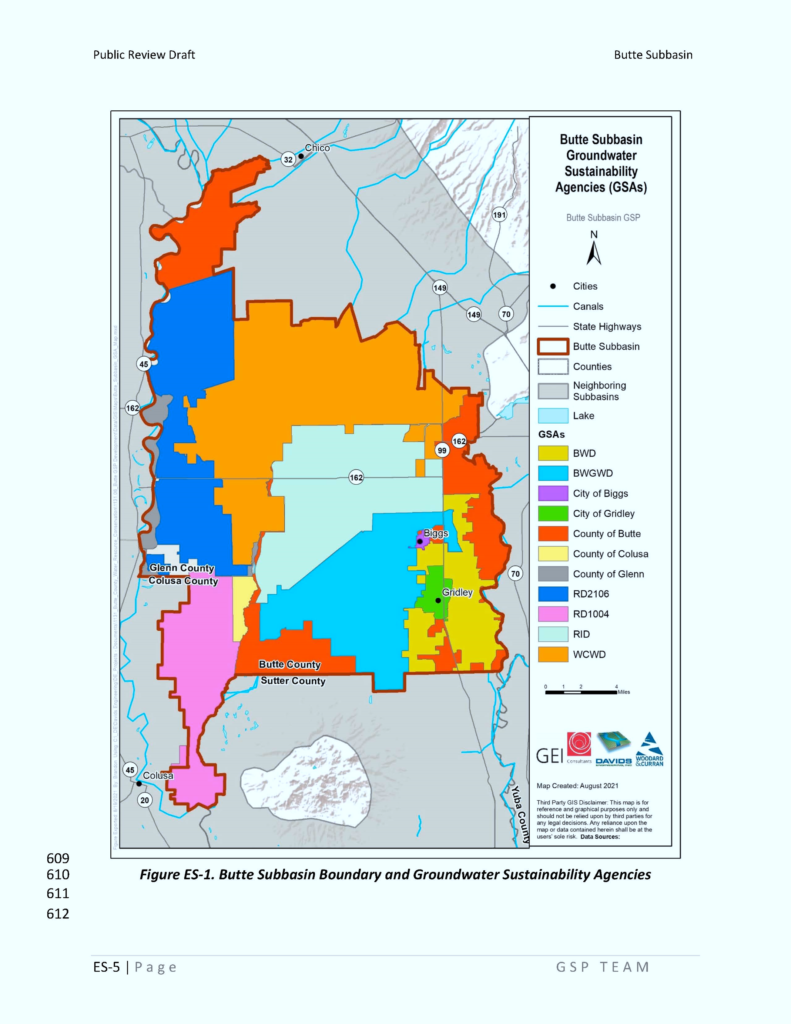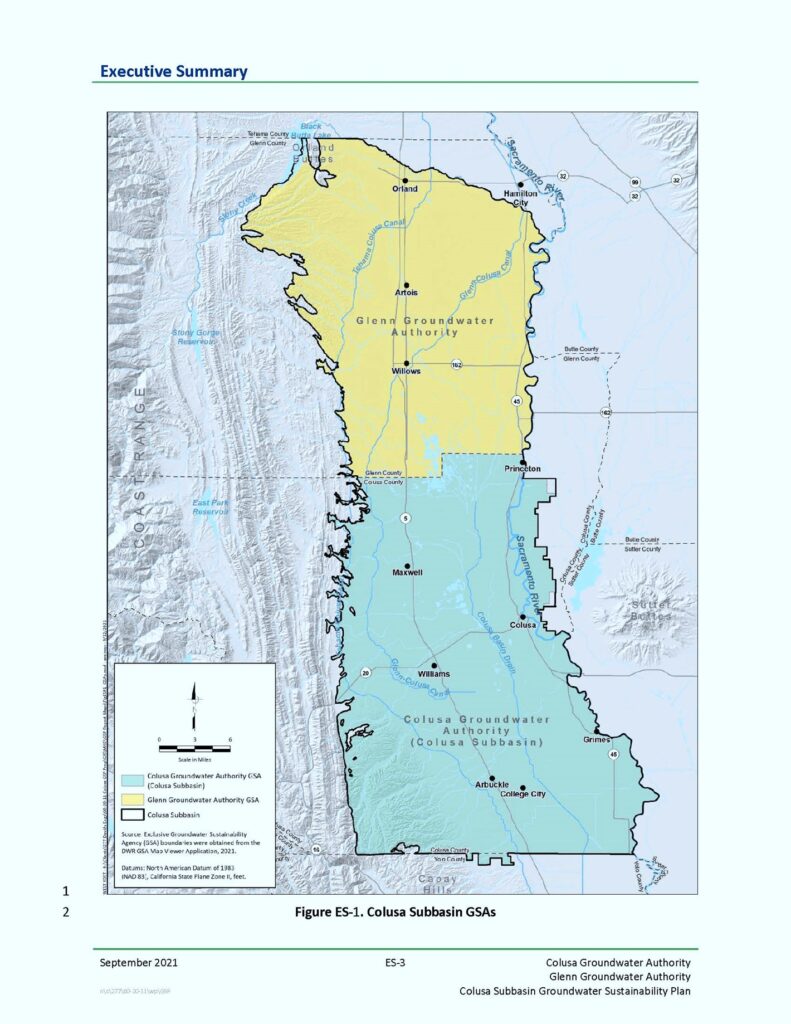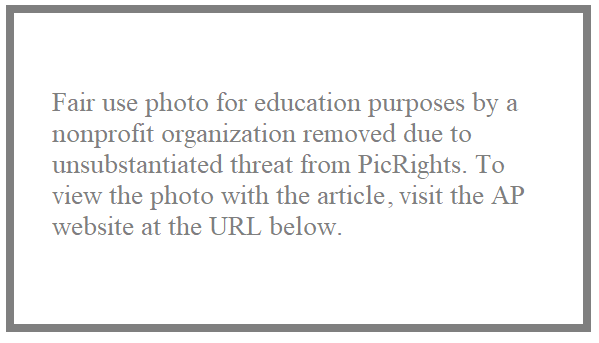Public Left in Dark
Sinkhole Existence Buried in Meeting Minutes
On January 11, 2022 AquAlliance become aware of sinkholes in the mid-Sacramento Valley through minutes from the Glenn Groundwater Authority1 and the Corning Sub-basin GSA Committee2. We requested additional information from Glenn County by e-mail and the Department of Water Resources (DWR) at the Red Bluff office by e-mail and voice message. There were no responses over 13 days hence we resorted to formal Public Records Act requests.
Preliminary review of records released to date indicates that
- There are multiple properties east of Orland with sinkholes (see Exhibit A).
- Glenn County and DWR have known about reports of sinkholes since August 2021.3
- “Several holes were observed ranging from 1-ft in diameter to 6-ft in diameter with varying depths ranging from 1 ½ feet to 3 feet deep. Mr. S…* stated that one of the holes that he already repaired required six dump trailer loads (about 3 yds each) to refill. The question that is being asked is where is the dirt going? Since there is the suspicion of being related to groundwater pumping, we are bringing this to your attention.”4 [emphasis added] [*name altered for privacy]
- It appears to be unexpected to find sinkholes in the soils of Glenn County. “I researched this topic and found only one publication on sink-hole like features in alluvial soils not in karst terrain, and that was in Italy.”5
Turkey Sinkholes Attributed to Groundwater Overuse
In Turkey, 2020 reporting found that drought and overuse of groundwater created massive sinkholes.6 “Giant sinkholes, large enough to swallow a house, are plaguing farmers in central Turkey. The past two years have brought a crippling drought, and farmers are using wells to tap even deeper into groundwater reserves.”7
Sinkholes Cause Health, Safety & Economic Concerns
The growing number of sinkholes in Glenn County is clearly alarming. The health and safety issues may be significant and the economic costs enormous. The cause has not been revealed yet, but whatever the reason, Glenn County and DWR need to enforce a moratorium on new wells and stop all groundwater substation transfers within its jurisdiction.
More Data Needed
AquAlliance will attempt to keep the public and the press informed as more records are obtained and reviewed.
Background on Sinkholes in California
U.S. Geological Survey:
“It is a frightening thought to imagine the ground below your feet or house suddenly collapsing and forming a big hole in the ground. Sinkholes rarely happen, but when they strike, tragedy can occur. Sinkholes happen when the ground below the land surface cannot support the land surface. They happen for many reasons; read on to educate yourself about sinkholes.” https://www.usgs.gov/special-topics/water-science-school/science/sinkholes
National Geographic: https://www.nationalgeographic.com/environment/article/sinkhole
Los Angeles: https://abc7.com/sinkhole-van-crenshaw-street/7833491/
Exhibit A
Public Records file from Glenn County and DWR: Sinkholes_east_of_Orland_Sept-2021_(1).
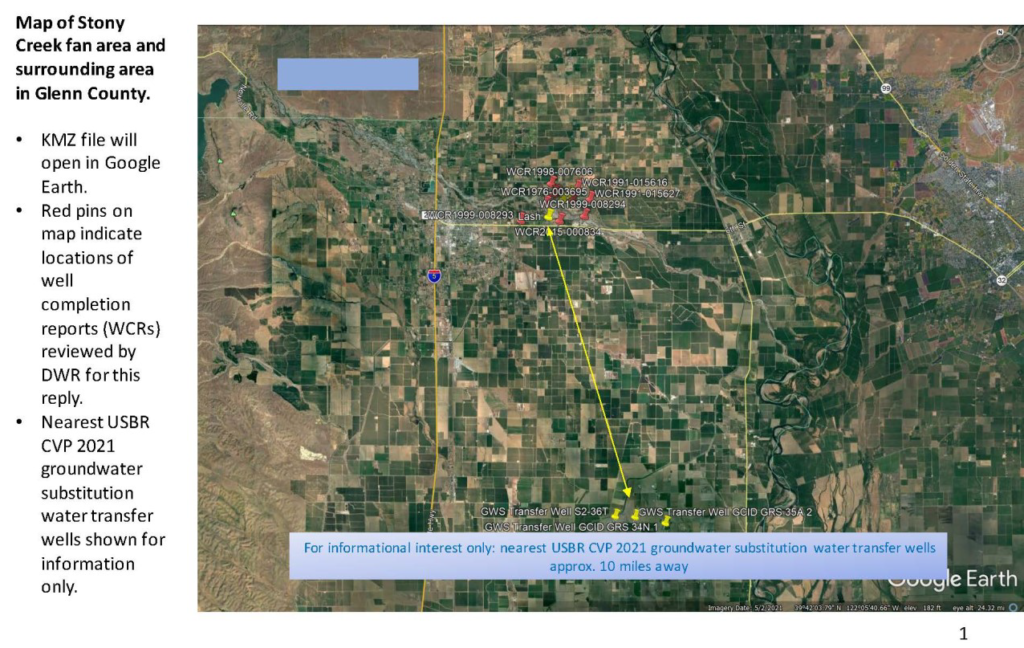
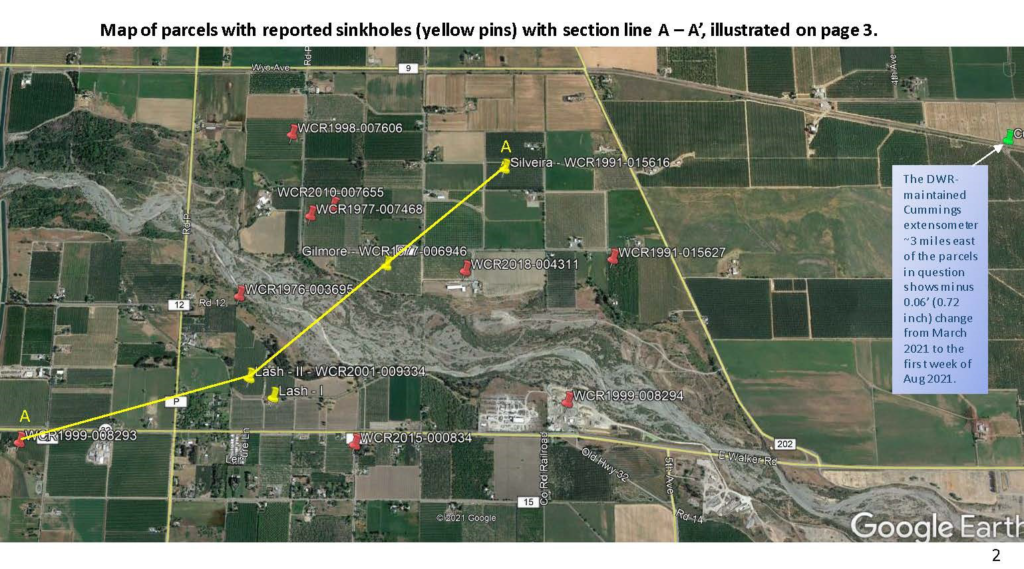
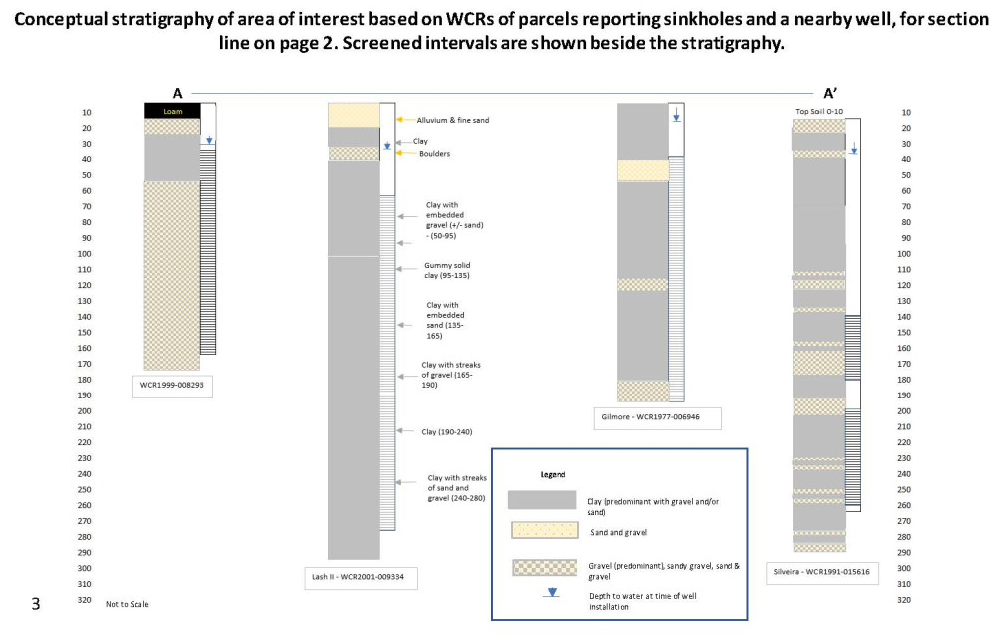
1 “Ms. Hunter also stated that staff was made aware of sink holes developing in the Colusa and Corning subbasins, and that a site visit has been conducted with Department of Water Resources.” Glenn Groundwater Authority December 14, 2021 minutes p. 2 (packet pdf p. 8).
2 “A new monitoring well was installed through the DWR Technical Support Services (TSS) program. Staff are considering utilizing the TSS program to apply for potential geophysical work to better understand basin conditions, particularly in areas of concern and/or data gaps (e.g., around Stony Creek where there have been reports of the ground “sinking” in the area). This effort will be coordinated with the Colusa Subbasin where the anomaly is also occurring.” Corning subbasin minutes December 8, 2021 p.2 (packet pdf p. 7)
3 Massa, Rick August 16, 2021 e-mail to Lisa Hunter of Glenn County. “We have learned of orchardists that are experiencing sink holes in their orchards.”
4 Id.
5 Loy, Ken e-mail October 10, 2021.
6 Taylor, 2021. Drought and Sinkholes Threaten Farmers in Turkey. The Atlantic. “Chris McGrath, a photographer with Getty Images, recently spent time in Turkey’s Konya province, where extreme drought conditions have been taking a heavy toll on farmers and the land. For farmers, the lack of rain gives them little option but to tap into the groundwater supplies to sustain their crops, forcing some to turn to installing illegal ground wells. However, the reliance on groundwater has seen underground water levels drop by more than two meters in the past five years, contributing to an increase in massive sinkholes across the province, worrying farmers as they spread closer to residential areas. The number of sinkholes in the region has doubled in the past year. Gathered below are images of some of the farmers and shepherds as they cope with the extremely dry conditions and unstable land.” https://www.theatlantic.com/photo/2021/06/photos-drought-and-sinkholes-threaten-farmers-turkey/619121/
7 https://theworld.org/media/2022-01-12/central-turkey-threatened-growing-sinkholes


